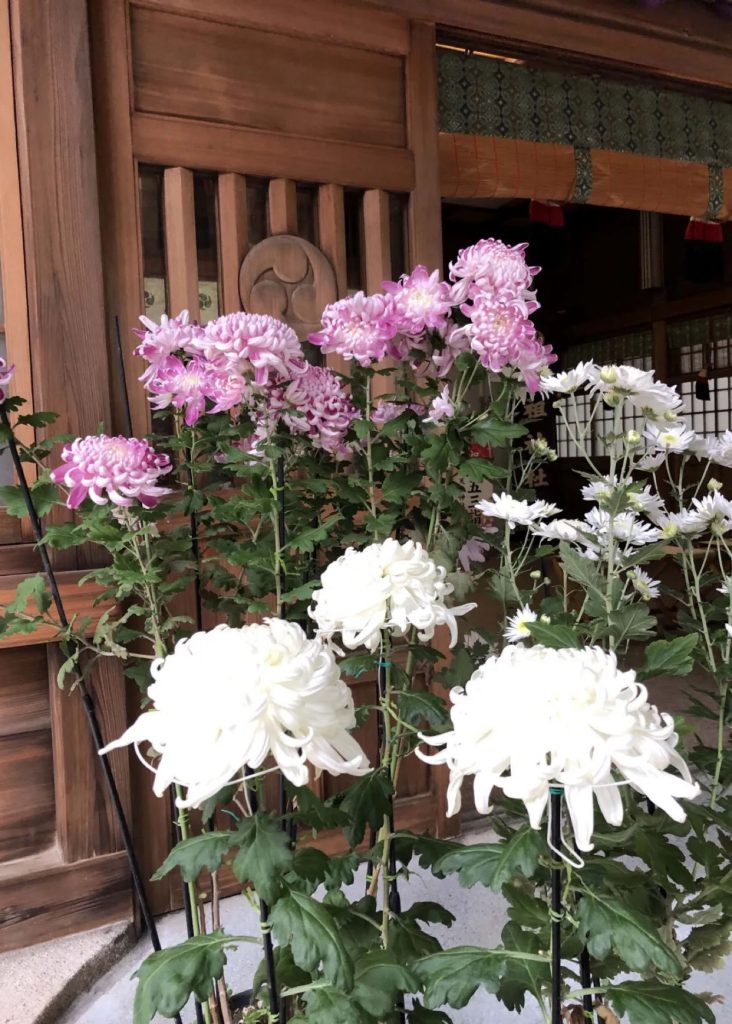
Several pairs of parents and children was visiting a small shrine nearby with “七五三(Shichigosan) celebration”. It’s a scene that doesn’t change at any time. On both sides of the hall of worship, there are many fine chrysanthemum pots made of Sanbon-sitate(triple cordon). The scent of chrysanthemums smells even to me, who is aware of the decline in my sense of smell. Shichigosan is said to be based on three rituals that have been held in the palace since the Heian period. In those days when the mortality rate was very high, children were treated as “of God (children of God) until the age of seven” and were recognized as the first to be full-fledged at the age of seven. In the Edo period, it spread to samurai and merchant houses in the Edo period, and eventually to Osaka and other regions. It was called “Shichigosan” in the Meiji era and spread to the common people, and it is said that the current shape was completed after the Taisho era.
近くの小さな神社に七五三詣でで親子連れが何組か訪れていました。いつの時代になっても変わらぬ光景です。拝殿の両脇には三本仕立ての立派な菊が何鉢も置かれています。嗅覚の衰えを自覚する身にも菊の香が匂ってきます。七五三は平安時代の頃から宮中で行われていた3つの儀式が基になっているそうです。死亡率がとても高かった時代は、子供は「7歳までは神のうち(神の子)」として扱われ、7歳になって初人として一人前であると認められていました。江戸時代に入って江戸圏内の武家や商家に広がり、やがて大阪そして地方に広がりました。それが明治時代には「七五三」と呼ばれて庶民にも広まり、大正時代以降に現在のような形ができあがったとされています。
